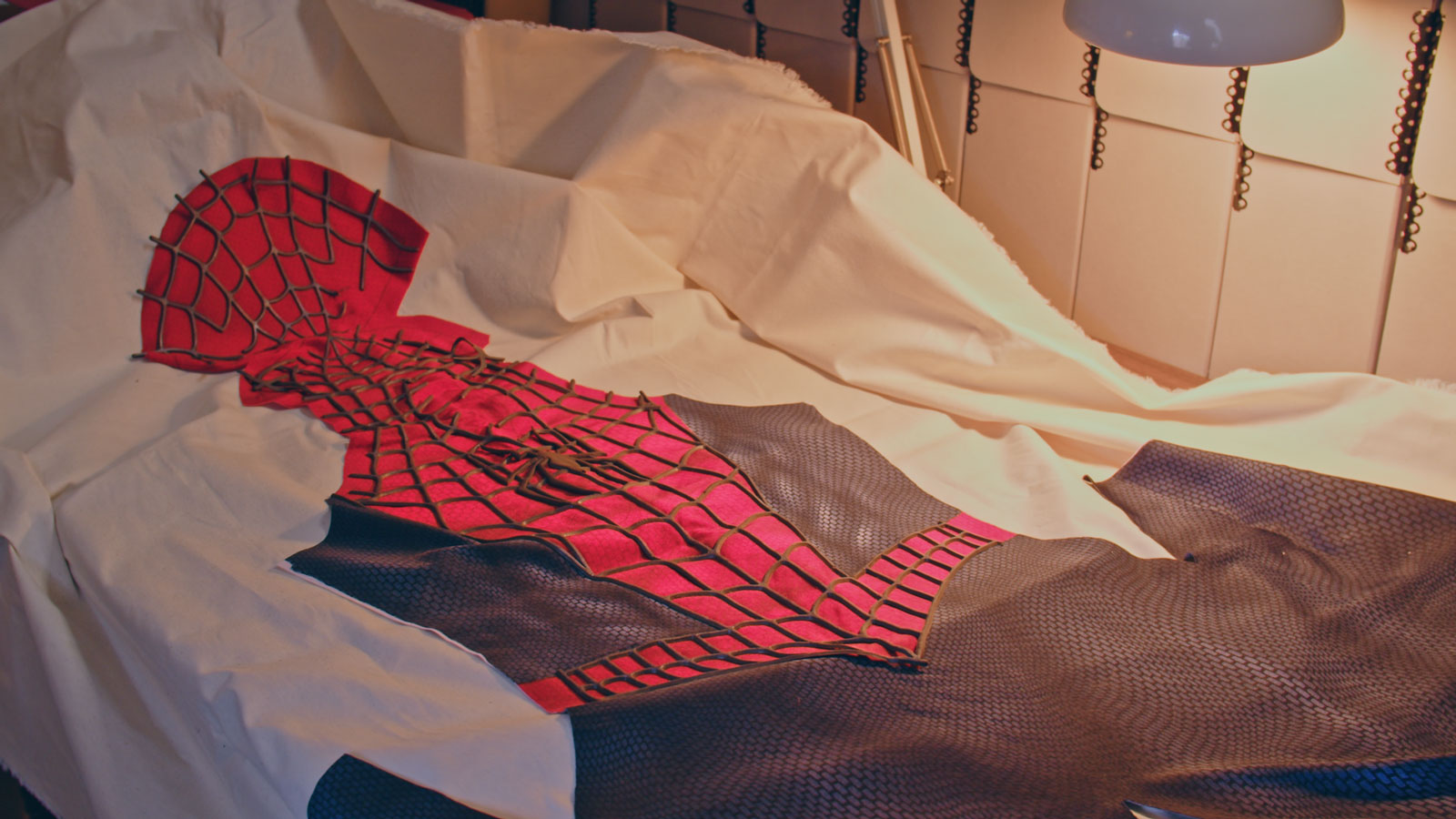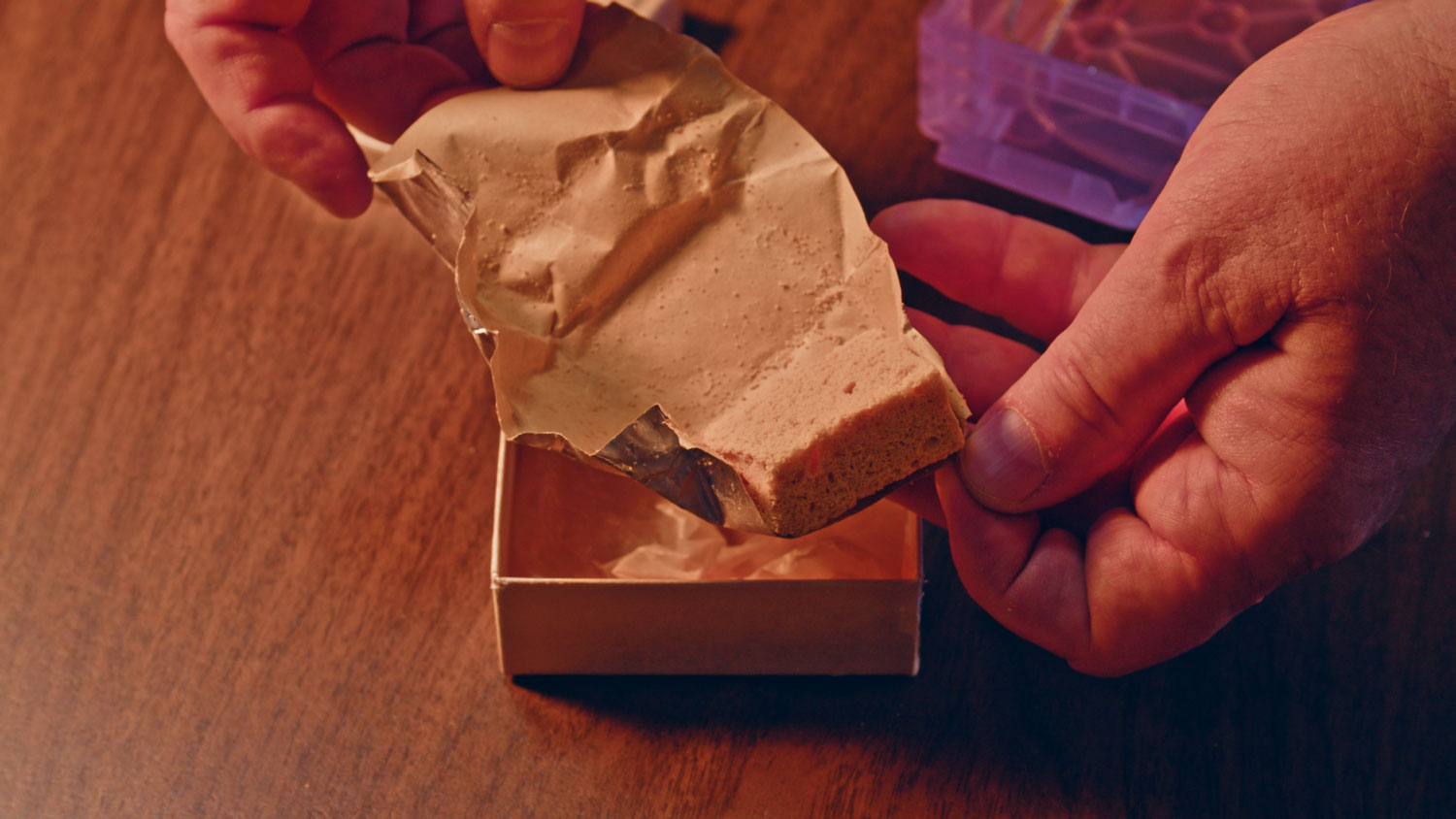From 18th century playbills to an authentic Spider-Man suit from the 2002 film to a 50-year-old slice of cake, the Popular Culture Collections in George A. Smathers Libraries has something for everyone.
Sarah Yancy Belknap, a librarian and historian, began the collections in the 1950s as a dance archive. Other areas of entertainment were eventually added — theater, film, television and music — creating what is now the Popular Culture Collections, located in the Special and Area Studies Collections Department.
Jim Liversidge, the collections curator, said, “It does create a moment in time, a 100-year moment in time from 1900 to 2000. And just shows what we did day-to-day, what as children we played with, what as adults we would watch on film, television, theater and so on.”
The John David Ridge Costume Design Collection contains a Spider-Man costume from the 2002 film “Spider-Man” and hundreds of what are called “costume Bibles” filled with his designs from Broadway productions. John David Ridge’s mother worked as a librarian at the University of Florida from the late 1960s to the early 1970s, and that is how the library acquired this collection.

(Dylan Taylor/UF News)
There are close to 15,000 comic books in the Suzy Covey General Comic Book Collection dating back to 1948. It originally started as a small collection in the Baldwin Library of Historical Children’s Literature at UF — one of the three largest children’s book collections in the world.

(Dylan Taylor/UF News)
The oldest items in the collections are theater promotional materials – playbills and programs – from Britain dating back to 1713. There are 150 boxes in the playbill collection, which is considered to be the largest collection of this kind in the southeast.
As curator, Liversidge’s day-to-day consists of going through boxes and cataloging what’s inside. When the libraries receive a donation, curators decide how they want to organize it, whether that is by item or year, then they put the items in special acid-free folders and boxes and write a description for those boxes to create a finding guide.
“It’s an adventure. It really is. Every day is a new discovery,” he said.
The processing time for a collection depends on the number of items in it. The Bob Hope Collection, for example, has taken Liversidge more than two years to process. Liversidge’s personal favorite item in that collection is a piece of cake from Tricia Nixon’s wedding in 1971 that was given as a wedding favor to the comedian.

(Dylan Taylor/UF News)
“About 20 years ago, there were discussions about expanding the performing arts archives into what we now know as the Popular Culture Collections,” he said. “There was some pushback at the time. We didn't think it would be something that would be used by faculty and students on campus. But we were wrong. And I'm so happy we followed the route to create the Popular Culture Collections.”
Liversidge said the Suzy Covey General Comic Book Collection is the most popular among students for research and personal use. Other collections are used by history, fine arts, communications and others for different areas of research.
Liversidge welcomes donations and collectors selling their collections. “We love collectors. We love hoarders. We love people who find things that they didn't know existed in storage spaces. And we are always welcome to discuss the acquisition of that material, if it is important and would support our collections. If you call me or send me an email or snail mail letter, I would love to hear from you.”

(Dylan Taylor/UF News)
In fact, Liversidge has made his own contributions to the collections. In 2010, he contributed about 180 boxes of artifacts with items that focus on current events and politics, which was aptly named the Jim Liversidge Collection.
To access the collections, Liversidge said to give him a call, email or visit him in the Grand Reading Room in Library East, which is open 9 a.m. to 6 p.m., Monday through Friday. He said the collections are available and easily accessible, with some items taking 10 minutes to find and others needing a day to fulfill the request.
“It's a colorful collection. With popular culture, it's one of those things you have to wait so that it gains importance through the years,” he said. “Maybe not today, but maybe 10, 20, 30 years, they will be sought after items for research. But currently, most of the collection is being used, and I'm very happy that that's happening.”